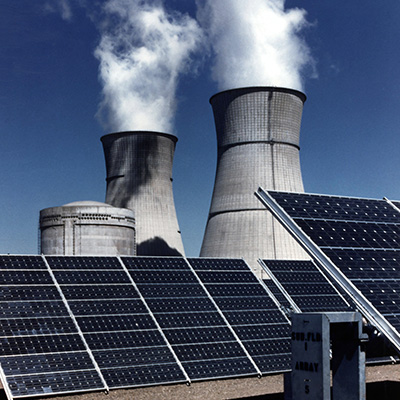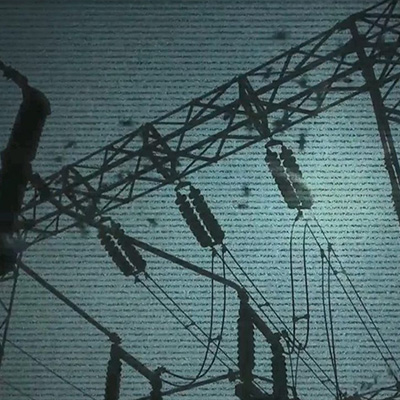Published On: Oct 13, 2015
Today, PQ is now even more critical to the industries because ofincreasing application of electronic loads and digitalcontrollers’ that are sensitive to the quality of power supplied. The minor power disruptions which one would have noticed only as momentary loss of the lights may now interrupt the whole automated factory assembly lines with sensitive electronic controllers.
In more than one sense, PQ issues are not only technical issues, but alsohave strong economic impact. If not addressed well, bad PQ management decisions can cost business millions of rupees each year inrevenue loss, process improvements, opportunityloss, equipment failure, electrical hazards like fire andscrapped product.
This blog attempts to showcase the importance of Power Quality, which if not timely improved or mitigated can result in huge economic losses primarily for high value industries. The blog primarily builds upon the various practical case-studies on PQ covering equipment failure, process interruption, increase in energy bill, etc. and the solutions adopted to successfully mitigate them.
ECONOMICAL LOSS AND PQ PROPORTIONALITY
In the Indian context, the massive economic loss due to poor PQ that could be sufferedby industries is still not well understood or captured.The economical losses are inversely proportional to PQ i.e. poor power quality supply would increase the losses and vice versa.
Power availability, in Indian context, has always been a vital base for all the industrial and household operations since decades however its quality at an optimum level is more necessary now as we grow into a digital world.While policy-makers are deeply engaged in addressing the demand – supply gap in the country, PQ issues are still not given due consideration which further aggravates our critical assets in the network.
One study done by Wartsila India in August 2009 indicated that India suffers a staggering loss of INR100,000 Crore (INR 1000 Billion and $ 15.4 Billion) due to nationwide power disturbances (including power outages). It also indicated that Indian industries are spendingINR 30,000 Crore (INR 300 Billion and $ 4.62 Billion) annually to operate inefficient power back-ups using Gensets andInverters.
So, we are still far away to assess realistically the economic impact due to poor PQ. At the same time, modernindustrial equipment is more sensitive to thesePQissues than ever before and need betterquality of electrical power.
CASE STUDY 1: MITIGATION OF HARMONIC AND REDUCTION IN OPERATING COST FOR A CEMENT PLANT
Problem Statement: The facility is one of the major cement manufacturing plants with state of the art technology. It has two manufacturing lines and each line has 8 numbers of cooler fans, 4 ESP transformer and raw mill classifier. The facility receives power from utility at 33kV level. The plant team decided to install Variable Frequency Drives (VFDs) for the cooler fans in order to maintain quality of the product and optimize energy cost. However, post installation of VFDs, it started facing losses in its key equipment like motors, conductor, transformers, etc. resulting in high economic loss for the plant. The economic loss incurred by the plant was over INR 60 lakhs per annum on account of this factors. It also faced following problems:
- Nuisance tripping of circuit breakers
- Failure of motor winding due to high temperature
Solutions and Benefits: In view of above problems, the plant team carried out a detailedpower quality study specific forharmonics at the facility. It was observed that both current and voltage harmonics distortion were up by 32.5% and 7.4% respectively. Both these values were above permissible limits as specified by IEEE-519 standard. As suggested by the PQ consultant, the plant team opted to install Active Harmonic Filters (AHF) at all locations where they have installed VFDs and made an investment of INR 2.20 Cr. By installing AHFs, the plant team successfully mitigated harmonics with an annual monetary benefit of INR 60 lakhs (payback of 3.8 years)
Conclusion: The plant team reduced harmonic level by significant level and also gained following benefits:
- Reduction in losses at motors, distribution system and transformers giving direct energy savings
- Avoided any nuisance tripping of circuit breaker
- Reduction in RMS value of current, failure rate of sensitive electronics, lesser production downtime & lesser production Waste
CASE STUDY 2: TOTAL POWER QUALITY MANAGEMENT IN AN AUTOMOTIVE COMPONENT MANUFACTURING UNIT
Problem Statement: Delphi-TVS is a JV between Delphi Corporation, USA and T.V. SundaramIyengar& Sons, India and manufactures Diesel Fuel Injection Equipment for different segment of Light Motor Vehicles, Tractors and others.Fuel injection system is very complex and needs precision control for better combustion and efficiency of the system. Initially the plant was receiving energy supply from 11kV feeder which was also catering power requirement of various other loads like mix of industries, domestic and agricultural customers. Because of this, the plant started facing various power quality issues (external like frequent interruptions, voltage unbalance and internal like failure of equipment, its tripping, etc.). Due to poor PQ, the plant started incurring economic loss of nearly 15-20 Cr. annuallyThe plant had to be operated for all 7 days (instead of 6 days) to meet its production, thereby incurring additional loss of INR 520 lakhs per year and alsoimpacted the business in following ways:
- Too many electronics failures resulting in increased down time
- Purchase of costly tools resulting in increased M/C tools
- Customer dispatch was seriously affected
- Increase in Scrap & Rejection cost
Solutions and Benefits: The plant team carried out the power quality audit and for each identified issues tookmitigation measures.Presence of noise was affecting performance of CNC machines. The team installed isolation transformer at the equipment level to mitigate the noise produced by various equipment.Due to switching of load, voltage dips were observed when plant was operating on DG sets. As a temporary measure, plant changed operating practice to avoid voltage dips due to switching of loads. Motors above 50 HP were started first and then power was resumed to the equipment whenever power was supplied through DG set. The plant went on to invest in captive power generation to improve the supply condition. With above all and installation of PQ mitigation equipment like capacitors, conductors, circuit breakers, etc. the plant invested totalINR 32 Cr. over few years.Due to this, it saved nearly annual INR 10 Cr, which if not incurred, would have caused plant annual economic loss of over INR 30 Cr.
Conclusion: By making considerable PQ investments, the plant had remarkable annual loss savings.It also got additional advantages as below:
- Workspace saving (removal of voltage stabilizers as DG sets were supplying critical loads).
- Saving in additional working day and its associated cost (to meet the target, the plant started operations for 7 days incurring additional cost of INR 520 lakhs per year. By saving a day and working for 6 days, it saved INR 500 lakhs per year).
- Meeting customer schedule and others.
CASE STUDY 3: HARMONICS MITIGATION IN A HOSPITAL AND ITS BENEFITS
Problem Statement: The hospital is one of the major hospitals in Hyderabad with specialization in treatments of heart disease, neuro-surgery, cancer and other life threatening diseases.The hospital was facing problems in their distribution system like higher temperature in the transformer, humming noise in the capacitor bank, disturbance on monitor screens of machines, higher energy charges, etc.resulting in high economic loss. It noticed the presence of harmonics at point of common coupling (PCC), higher than 30% as per the limits set by standards.
Solutions and Benefits: After detailed power quality study, the hospital management decided to mitigate these harmonics by installing 120 Amp Active Harmonic Filter (AHF) at an investment of INR 7.5 lakhs. This has resulted in significant reduction in energy consumption (thereby resulting in monetary benefit due to reduction in energy cost), improved services and diagnosis capabilities due to reduction in harmonics. Post installation study was carried out to analyze the benefits achieved by installing AHF.The table below shows the results of study before and after installation of harmonic filter:
|
Component
|
Before Harmonic Filter
|
After Harmonic Filter
|
Change
|
|
Total Harmonic Distortion (THD)
|
25%
|
5%
|
↓80%
|
|
Power Factor
|
0.97
|
0.995
|
↑2.5%
|
|
Avg. kVA
|
216 kVA
|
204 kVA
|
↓5.55%
|
|
Transformer Temperature
|
80-850C
|
450C
|
↓47%
|
Conclusion: By installing PQ mitigation equipment at an investment of INR 7.5 lakhs, the management gained substantial monetary benefit in terms of reduced electricity charges.Energy charges were reduced by INR 7.9 lakhs andthe hospital had simple payback period of less than 1 year. The facility also got additionaladvantages as mentioned below:
- Reduction in Total Harmonic Distortion (THD) being injected in the grid thus avoiding any future penalty levied on THD limits by SEB.
- Reduction in humming noise at the capacitor bank
CONCLUSION
It is quite evident from the case studies presented above that considering PQ mitigation does saveend user’s economic loss.While accurate estimation is difficult, however, to select an optimum PQ mitigation method in the network, an Economic Impact Analysis (EIA) is to be carried out by the involved parties to validate compliance, improve system stability, and eliminate unplanned downtime thereby contributing to the overall turnaround of utilities and their services for end users.
REFERENCES
- Economic aspects of power quality.pdf– Survey on Power Quality problems
- Power Quality Issues and Need of Intelligent PQ Monitoring in the Smart Grid Environment – International Journal of Emerging Technology and Advanced Engineering
- Case Study 1 – Case Study on Mitigation of Harmonic and Reduction in Operating Cost for a Cement Plant
- Case Study 2 – Case Study on Total Power Quality Management in an Automotive component manufacturing unit
- Case Study 3 – Case Study OF Harmonics Mitigation in a Hospital and its Benefits
- Cost of Power Disturbances to Industrial and Digital Technology Companies – EPRI’s Consortium for Electric Infrastructure for a Digital Society
- Consequences of Poor Power Quality – An Overview – Sharmistha Bhattacharyya and SjefCobben Technical University of Eindhoven The Netherlands







